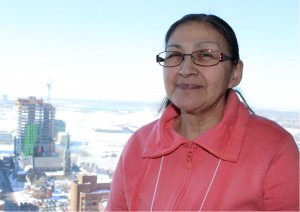Demand for Canada Post’s services may be in decline, but a database obtained through an access to information request shows the postal service gets frequent use by Canadians mailing marijuana to every corner of the country.
The database, which compiles all of the illegal goods seized by Canada Post in 2011 and 2012, shows that marijuana is far and away the most common item seized.
Canada Post refused to be interviewed about the released data and their methods for detecting the presence of illegal goods in the mail.
“For security reasons, we unfortunately cannot provide details on these. It only serves those who aim to fraud the postal system,” a Canada Post representative said in an email.
Const. Marc Soucy of the Ottawa Police Services says that though Canada Post employs its own investigators who deal with illicit items discovered in the mail, if a seizure yields the discovery of something criminal, local police are alerted.
“Any illegal substance in any quantity is investigated,” Soucy said.
The quantities of marijuana seized in the two years that the database covers range from a single gram to as much as 36 kilograms. Despite Soucy’s statement that all discoveries of marijuana are investigated, there is a significant online community that seems to be unconcerned about the risk of using Canada Post as a courier for the drug. A simple Google search for mail-order marijuana in Canada returns dozens of results that promise to deliver quickly and discreetly by mail.
Bud Buddy is a set up that advertises itself on its website as “Canada’s original and best mail-order marijuana service”. The website claims “So far, Canadian police have had higher priorities than going after us” and “We have never had a customer suffer a legal problem due to ordering from us”.
The mail service’s website assures customers that it vacuum seals its products to prevent the telling odour from giving away the contents and that the packages it ships via Xpresspost are discreet and blend in with regular mail. Bud Buddy even provides customers with a guarantee of a one-time free replacement if an order doesn’t arrive. Interestingly, the guarantee is not offered and an extra shipping fee is charged to customers in Canada’s three northern territories. The website says that shipments to Yukon, Northwest Territories and Nunavut are at a much higher risk of being lost and stolen.
To avoid detection and theft, senders sometimes attempt creative packaging, the efforts of which are described in the Canada Post database. An entry for an October 2012 seizure of a package destined for Inukjuak, Quebec reads “Homestyles Coffee Brewer original box – inside water reservoir was a substance appearing to be cannabis wrapped in plastic wrap”. In May 2012, officials recorded finding Whitehorse-bound marijuana tucked inside an unused diaper.
The detection of illegal marijuana moving through Canada’s postal system has the potential to get a lot more complicated in the coming weeks. As of March 31, Health Canada will require anyone with a prescription for medical marijuana to purchase their dosage from a licensed dispenser and to have it delivered by post, as storefront and retail distribution centres will be disallowed. It will be interesting to see if the flood of legal marijuana into the mail service will prove to be a boon for those who Canada Post fears are working to fraud the system.
Access to Information Requests
1. The information I used for my story is a previously released request from Canada Post. It is the hard copy of a database that lists all of the illegal things Canada Post seized from the mail in 2011 and 2012.
2. I received the information from Canada Post, a federal crown corporation.
3. This information was helpful because it showed that marijuana is by far the most commonly discovered illegal substance in the mail. The problem was that I only had access to a hard copy, so there was no way for me to sort the information. This is a shame both because I lacked the accuracy that would have come with being able to speak to the actual numbers and because being able to sort for date and location could have provided some rather useful insights.


